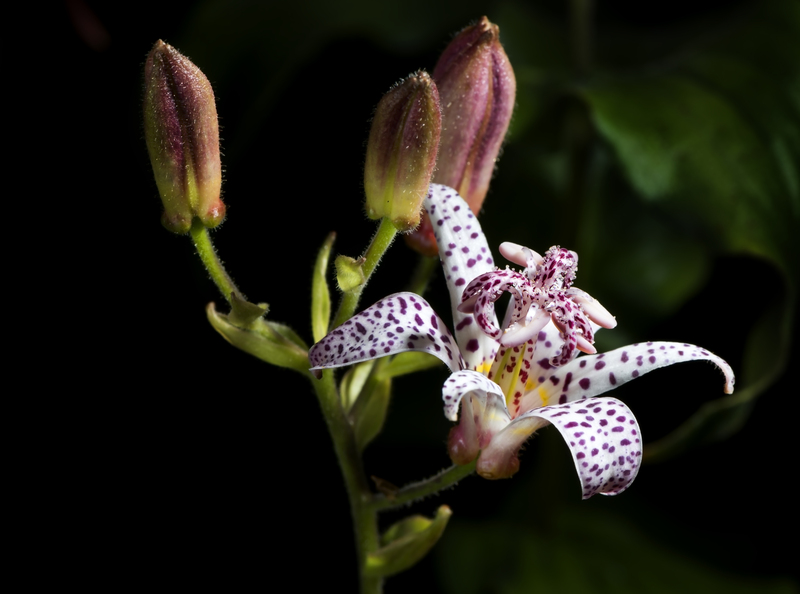Hedge Trimming as an Art Form: Expressive Shapes and Techniques
Posted on 14/09/2025
Hedge Trimming as an Art Form: Expressive Shapes and Techniques
Hedge trimming often conjures up the image of a simple garden chore, but for countless gardeners and landscape artists, hedge trimming is much more than that. When elevated to an art form, hedge trimming can transform an ordinary space into a living, growing masterpiece. This comprehensive article delves into the world of artistic hedge shaping, uncovering the expressive techniques, creative concepts, and practical advice required to master the craft. Whether you're a home gardener or a budding topiarist, discover how hedges become canvases for expressive landscaping.

Understanding the Art of Hedge Trimming
What is Artistic Hedge Trimming?
At its core, artistic hedge trimming transforms hedges from functional boundaries into visually captivating, expressive works of art. Rather than relying on basic geometric shapes, creative hedge sculptors leverage bold patterns, playful curves, and imaginative figures. The process is akin to sculpting, where plants are trimmed, formed, and continually refined to evoke emotion, curiosity, and wonder in the viewer.
Origins and Cultural Significance
The roots of elaborate hedge artistry trace back centuries, with topiary--the most recognized form--originating in ancient Rome. Over time, artistic hedge shaping gained popularity in French, Italian, and English gardens. In many cultures, shaped hedges symbolized affluence and meticulous care. Today, expressive hedge trimming is enjoying a renaissance, with urban spaces, public gardens, and private estates embracing the green canvas for creative storytelling.
Why Pursue Artistry in Hedge Trimming?
- Aesthetic Enhancement: Elevates the visual appeal of any landscape.
- Creative Expression: Offers gardeners a living medium for personal expression.
- Status Symbolism: Historically denoted prestige and taste.
- Connection to Nature: Encourages closer interaction with natural forms and cycles.
- Therapeutic Experience: Provides mindfulness and a sense of accomplishment.
Expressive Hedge Shapes: Exploring the Spectrum
Classic Geometric Forms
Traditional hedge shapes like spheres, cubes, cones, rectangles, and pyramids have timeless appeal. They impart order and symmetrical elegance to formal gardens while offering strong visual structure.
Abstract and Organic Designs
For a more modern or naturalistic approach, artists often sculpt hedges into flowing, organic forms that mimic waves, spirals, or gentle slopes. These shapes interact playfully with light and shadow, bringing dynamic movement to the landscape.
Figurative and Representational Topiary
One of the most impressive hedge sculpting techniques involves crafting living sculptures--animals, people, or fanciful creatures. These three-dimensional figures captivate visitors and add a whimsical, storytelling element to gardens.
- Animal Forms: Bears, birds, horses, and more.
- Human Characters: Gardeners, children, mythological figures.
- Objects and Symbols: Hearts, spirals, musical instruments.
Functional Artistry
Some expressive hedge trimming combines form with function, producing living gateways, arched corridors, mazes, or seating areas. These serve practical purposes while showcasing the creative prowess of the gardener.
Essential Techniques for Artistic Hedge Trimming
Choosing the Right Plant Material
Not all shrubs are equal when it comes to artistic hedge trimming. The key is to select species that are:
- Evergreen, for consistent color and structure year-round.
- Dense, with fine leaves and close branching patterns.
- Tolerant of regular, close pruning.
- Fast-growing, for quicker results (with careful maintenance).
- Boxwood (Buxus) - Classic topiary favorite for tight shapes.
- Yew (Taxus) - Hardy and long-lived, suitable for large forms.
- Privet (Ligustrum) - Rapid growth, easy to shape.
- Holly (Ilex) - Spiky, glossy leaves and good structure.
- Lonicera nitida - Fine leaves ideal for detail work.
Fundamental Pruning Tools
- Hand Shears - For precise, detailed trimming.
- Electric or Battery Hedge Trimmers - Perfect for larger or straight-edged shapes.
- Topiary Frames - Wire guides to help create complex figures and support growth.
- String Lines and Stakes - Ensure straight and level pruning for geometric designs.
- Ladders or Platforms - Access higher sections safely.
- Marking Tools - Chalk lines, washable paints for sketching initial patterns.
Step-by-Step Artistic Shaping Process
- Vision & Planning: Visualize your goal. Sketch or digitally render your intended design on paper or a planning app. Consider hedge size, plant maturity, and available growth space.
- Preparation: Ensure plants are healthy and watered, and all cutting tools are sharp and clean.
- Rough Shaping: Remove excess growth, outline general forms. For detailed figures, install topiary frames as a guide.
- Refinement: Trim carefully, working from top to bottom and outside in. Observe symmetry, proportions, and perspective from key viewing angles.
- Detail Work: Fine-tune edges, accentuate curves or features. Step back frequently to assess your progress.
- Maintenance: Schedule regular trims to keep the shape crisp. Monitor for disease and fertilize appropriately to promote healthy regrowth.
Tips for Mastering Expressive Hedge Sculpting
1. Emphasize Proportion and Balance
Proportion is crucial in all forms of hedge sculpture. Overly exaggerated limbs or faces can detract from the intended effect. Compare frequently to your reference images or guides, and tweak as necessary.
2. Use Negative Space Creatively
Artistic hedge trimming is not just about what you trim, but what you leave behind. Strategic negative space--holes, windows, or interlocking forms--creates drama, invites exploration, and adds a modern edge.
3. Understand Light and Shadow
Different times of day reveal new perspectives. Subtle shaping can produce dramatic interplay of light and shade, particularly with rounded or intricate forms. View your work at various light angles and adjust accordingly.
4. Practice Patience and Consistency
Unlike static sculpture, living hedge art evolves over time. Some designs require several growth seasons to reach their full potential. Don't rush--slow, consistent shaping leads to dazzling results.
5. Harness Frames and Molds
Custom wire frames provide a stable template for complex shapes, especially for novices. Over time, you may rely less on these aids as your skills develop, but they can ensure accuracy and consistency for intricate or large creations.
Common Challenges and Solutions in Artistic Hedge Shaping
- Irregular Growth: Hedges may grow unevenly due to inconsistent sunlight or pruning. Rotate your trimming direction, use fertilizer, and periodically step back to survey from multiple angles.
- Pest and Disease Management: Dense shapes can trap moisture and hide pests. Inspect regularly, ensure good airflow, and choose disease-resistant plant varieties.
- Weather Damage: Heavy snow or wind may bend or break delicate forms. Trim lightly before winter and support fragile limbs with discreet stakes if needed.
- Shape Loss: Lapses in regular pruning can cause shapes to blur. Maintain a consistent trimming schedule and address overgrowth promptly.
Inspiring Examples: Iconic Hedge Artistry Around the World
Travel anywhere from European castles to Japanese temple gardens, and you'll find breathtaking examples of expressive hedge trimming. Some gardens and parks even host hedge sculpture festivals, where artists display fantastic scenes sculpted from greenery.
- Levens Hall, UK: Home to one of the world's oldest topiary gardens, featuring extraordinary geometric and animal shapes in centuries-old yew and box hedges.
- Chateau de Villandry, France: Renowned for its colorful, patterned parterres and ornamental hedges in swirling, baroque forms.
- Green Animals Topiary Garden, USA: Showcasing whimsical animal and ornamental shapes, this Rhode Island garden is a testament to the playful side of hedge art.
- Kawachi Fuji Garden, Japan: Though famous for its wisteria tunnels, features delicate, cloud-shaped hedges reflecting the Japanese art of niwaki (garden tree shaping).
Frequently Asked Questions about Artistic Hedge Trimming
How often should I trim my hedge art?
For expressive forms, regular maintenance is vital. Light trimming every 4-8 weeks during the growing season keeps edges sharp and the overall shape well-defined. Always avoid trimming in periods of drought or extreme heat.
Can I create artistic hedge shapes with young hedges?
Yes, though patience is required. Start training young shrubs early for best results, encouraging dense, even growth. Use gentle shaping at first and avoid cutting into old wood, which may not regrow.
Are artistic hedge sculptures suitable for small gardens?
Absolutely! Even miniature forms--spiral cones, geometric spheres, or animal busts--make a dramatic impact in compact spaces, patios, or containers.
What's the best time of year to shape hedges?
The ideal timing depends on plant species. Generally, late spring to early summer after the risk of frost has passed is preferred. For a second light shaping, late summer is suitable before growth slows for winter.

The Future of Hedge Trimming Art: Innovation and Trends
Today's hedge artists draw inspiration from both tradition and cutting-edge design. Technology enables 3D modeling of hedge art, while sustainable practices encourage the use of native species and pollinator-friendly shrubs. Collaborative projects--like public art installations--push the boundaries of what's possible, turning city parks and civic spaces into lush, imaginative escapes.
Conclusion: Express Yourself Through Living Sculpture
Whether your goal is to recreate a classic topiary shape, invent a new, abstract green form, or simply add beautiful structure to your landscape, hedge trimming as an art form offers endless possibilities for personal expression. By mastering plant care, selection, and artistic shaping techniques, you can unlock the transformative power of hedges. In doing so, you'll not only enrich your garden but also join a centuries-old tradition of creative stewardship of the land.
Let your imagination flourish and turn your hedges into living art!



